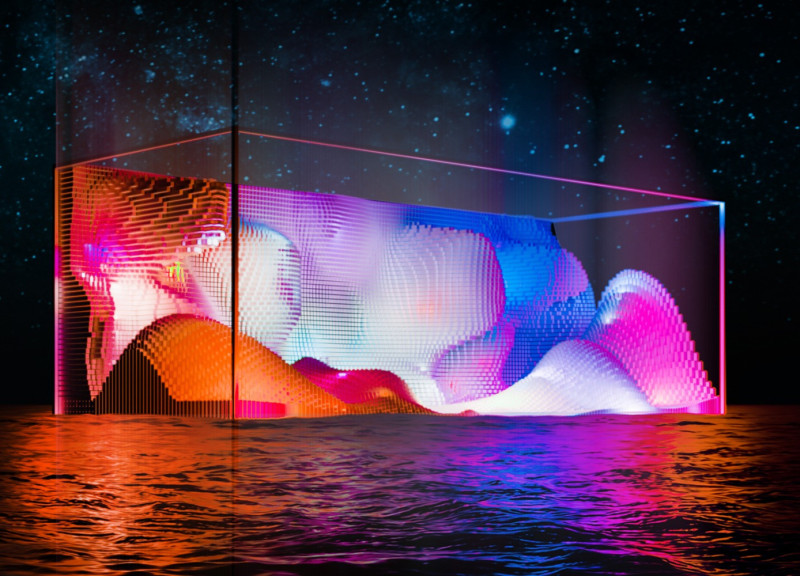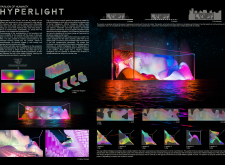5 key facts about this project
The Pavilion of Humanity: Hyperlight serves as a conceptual examination of the features that distinguish human consciousness from other forms of existence. Situated in adaptable locations, the pavilion provides an interactive setting designed for engagement and contemplation. Its design centers around the relationship between humanity and technology, aiming to reflect the complexities of human experience through architecture.
Design Concept
The structure consists of two main planes: a horizontal and a vertical element, which come together to create a flexible and dynamic form. This arrangement allows the pavilion to adapt to cultural changes and respond to real-time data inputs. Rather than being a fixed structure, it continuously evolves to represent the shifting narratives of society and the human condition.
Interactivity and AI Integration
Artificial intelligence plays a key role in the pavilion's design, acting as both a curator and an interactive feature. The AI system utilizes various data sources, including social media and news feeds, to generate visuals that inform the pavilion’s spatial and aesthetic characteristics. This interaction encourages users to engage with the ever-changing narrative, fostering a connection between the structure and the environment.
Abstract Representation
The form of the pavilion is abstract, focusing more on representing human experiences than on specific functions. By maintaining a lack of geographical or temporal context, it preserves its core concept while reflecting universal aspects of humanity. The ability of the pavilion to adapt based on current analyses ensures that it remains relevant in today's world.
Dynamic Design Elements
The design includes different lengths and colors that fluctuate in response to AI analyses of ongoing events and social trends. These dynamic features enhance the visual complexity of the pavilion and signify its ongoing dialogue with the world around it. The structure ultimately captures a blend of thought, technology, and form, making it a place for reflection on the nature of humanity.



















































